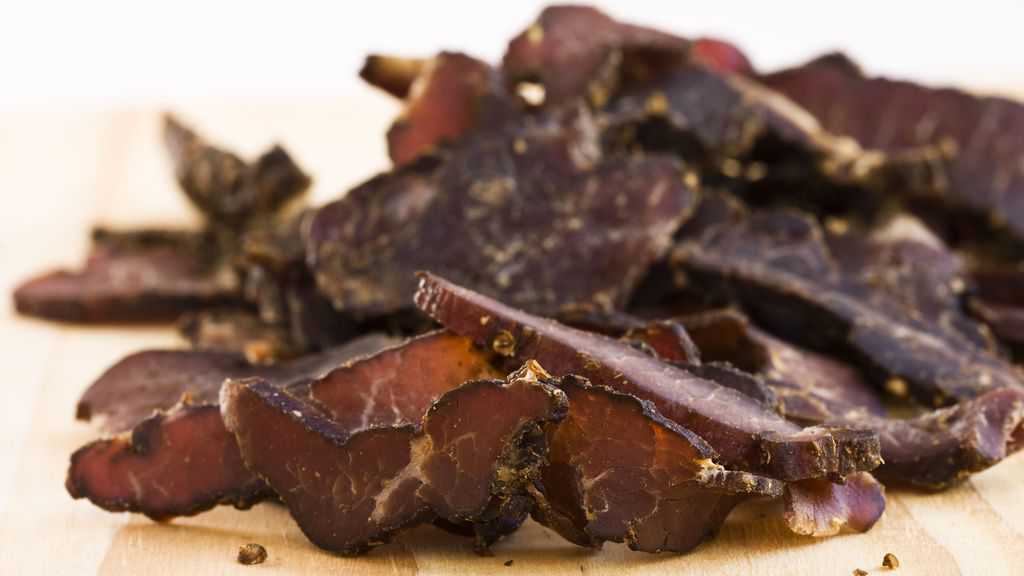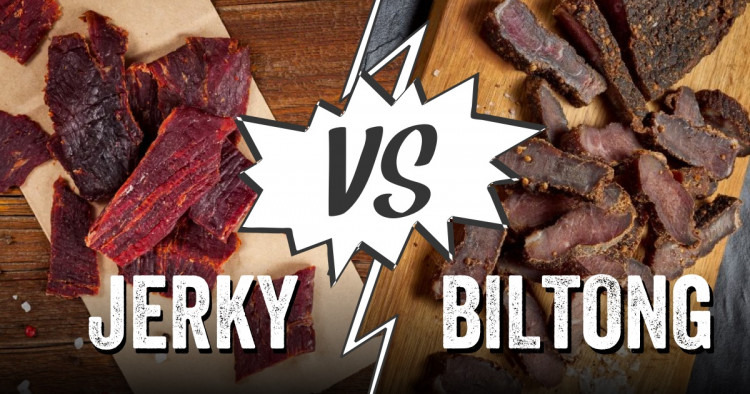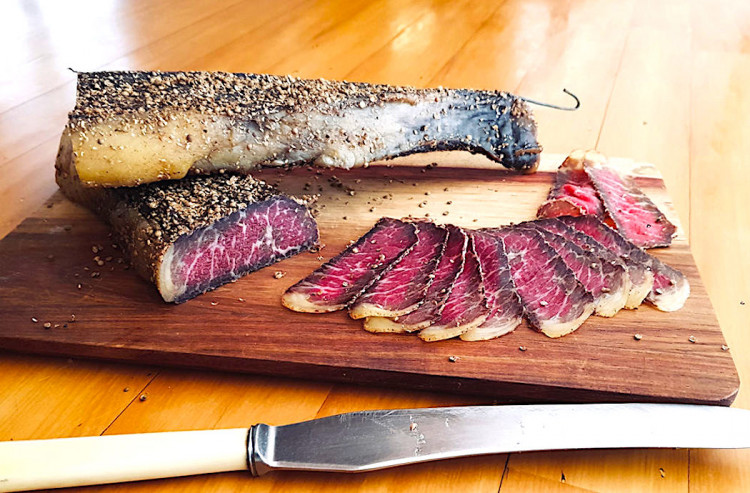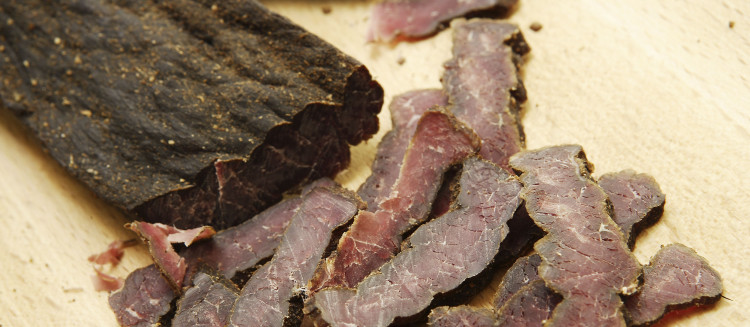

Consumer snacking trends were already transitioning, but the COVID-19 pandemic has accelerated those changes to our snacking habits with three in four of us stating we wished to eat more healthily. And, according to recent reports, the global healthy snack market is expected to grow at a rate of 5.8% CAGR to reach $98 billion by 2025.
Biltong is just one of those snacks that were once considered a road trip snack that was only found in service stations, now, biltong is being praised for its array of health benefits including its high protein content.
Many people commonly mistake biltong for beef jerky. While both are similar in that they are both cured meat snacks that are high in protein, there are also plenty of differences including ingredients, taste, and production process.
In this post we’ll be looking at two of the most popular cured meat snacks – beef biltong and beef jerky so that when you’re next searching for a healthy snack you know exactly which one to go for!

What is Biltong and where does it come from?
Biltong is a traditional South African snack that originated some 400+ years ago as a way to preserve meat for future meals.
When Dutch settlers arrived in South Africa, they brought with them new processes and spices which is where biltong was born!
Biltong is made using the most premium grass-fed beef, and nothing but traditional spices such as coriander seeds, cider vinegar, and black pepper go into curing beef biltong. Once perfectly seasoned, the meat is then air dried before being sliced into strips.
While beef is the most common protein source of biltong, it can be made from a variety of meats including venison, ostrich, and kudu.
What is Jerky and where does it come from?
Commercial beef jerky, on the other hand, originated from South America in the 1800s. Similarly to biltong, it came about from the need to preserve meat for future meals.
Jerky is made using lean cuts of meat that are separated from the bone, stripped of any fat, salt and sugar added before being cured either by injecting a curing solution or dipping meat in the solution. It is then cut into strips, heated, then dehydrated.

What is the difference between jerky and biltong?
Although many people often mistake Biltong and Beef Jerky for the same thing, these two cured meat snacks couldn't be any different! While they are both tasty snacks that have a long shelf life, that's where the similarities end.
Ingredients – complex vs simple
While both meat snacks use a blend of savoury spices to produce that deliciously balanced flavour that we all know and love, the methods used for biltong are much simpler, relying on the traditional South African recipe of utilising vinegar as a way to prolong the shelf-life of the meat.
Biltong also uses little to no sugar meaning that it is suitable for a variety of diets including paleo and keto.
Taste – sweet vs savoury
Biltong uses vinegar and little to no sugar meaning that it has a much more savoury and acidic taste vs. that of beef jerky which can taste smoky and sweet due to the ingredients and dehydration process.
Production methods – air dried vs cooked and dehydrated
Jerky is made by slicing strips of beef before cooking them in an oven or dehydrating them for 12+ hours. This is what leads to a much chewier snack.
Biltong, on the other hand, is prepared by air drying and then slicing the strips of beef to the desired texture.

Texture – fluffy vs chewy
If you’ve tasted jerky before, you’ll know that it’s very chewy in texture. This is because it is sliced into strips before being cooked and dried, leading to a much tougher mouthfeel.
Biltong is air dried as one whole piece of beef and then sliced into bite-sized pieces making it much softer and fluffier in texture than jerky.
Is Biltong healthier for you than beef jerky?
Although both biltong and beef jerky are both incredibly high in protein, biltong is a much healthier snack as it’s much cleaner (containing little to no sugar) and leaner.
A grab and go bag (35g) typically contains around 35% of your daily protein requirements, making it a great addition to gym bags and snack drawers around the country. It’s also the ideal snack for a wide variety of lifestyles including paleo and keto.
The downside of Beef Jerky is it's incredibly high sodium content; the same 35g bag contains 100x the amount of biltong, so it should only be eaten in small quantities as excess sodium in the diet has been linked to higher blood pressure and high cholesterol.
Conclusion
One thing is clear – people are snacking more than ever before and are turning to new, healthy, high-quality, and innovative snacks to satisfy their cravings and keep hunger at bay until mealtimes.
This is why beef biltong is so popular and has experienced a renaissance in recent times.
Biltong has everything you could want or need in a snack – easy to store thanks to its long shelf life, portable, high in protein and super delicious!













